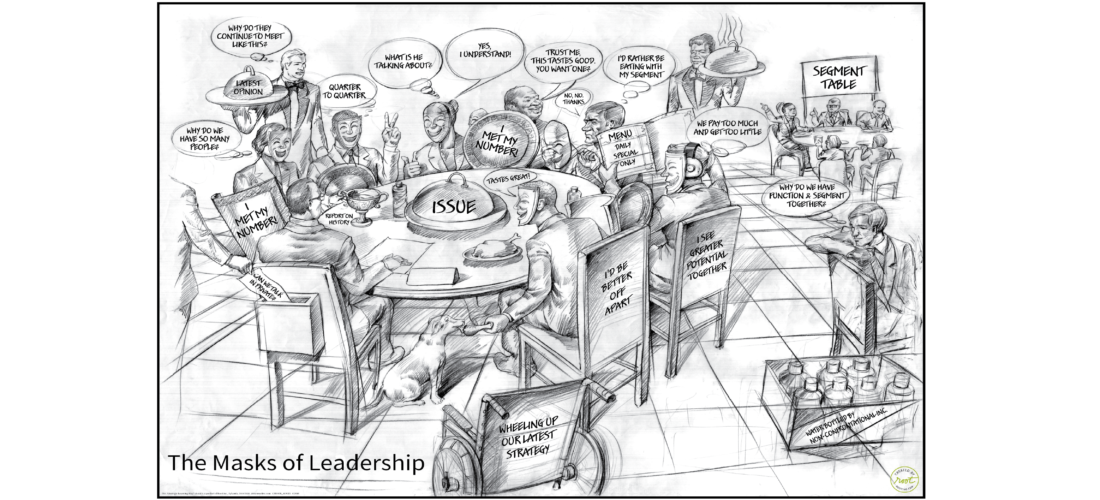Activating Strategies Series #1: Defining Reality for Building a Strategy for the Future
You can’t define where you want to go unless you know exactly where you are today. Organizations need an objective window into the business – but that’s not easy when you’re firmly positioned inside it. Leaders need to take stock of the current state of the business in order to identify the barriers keeping the business from growing or moving forward.
To really understand where you are right now as a company, the first step is to get real. Business guru Larry Bossidy says, “Realism is at the heart of engagement.”
Since every good business wants its employees to be engaged, leaders must build a culture of realism, authenticity, and truth. When leaders value truth in the workplace – and they show it – everyone knows that they can say what they truly think and feel without fear. To be authentic, this means not just allowing but encouraging cynicism, using it to spark accountability and improvement instead of hopelessness.
Creating this honest assessment allows you to clearly define your strategy and the results of that strategy. And the hard reality is – this means more than just taking a hard look at the employees – leaders also need to take a step back and assess themselves.
Three Great Lies
As the old adage goes – the more things change, the more they stay the same. This can also be said about organizations. While each organization is unique, there are still a lot of commonalities that can be found. You can’t have clarity unless you tell the whole truth, and the most common reality is that at every organization, there are “three great lies” that are nearly always present in the executive suite:
- ‘We have a strategy.’
- ‘We are aligned on the strategy.’
- ‘We have data to support the strategy.’
The only way these lies typically differ is in their magnitude. The lies are present because most senior teams aren’t clear on just what the strategy is or what it looks like to people at all the levels of the company. They haven’t stopped to take stock at their current reality. They haven’t asked themselves:
- Are they exhibiting the right behaviors?
- Are they all aligned on where the company wants/needs to go to be successful?
- Do they have an honest view of how the rest of the organization views the leadership team?
Truth and Trust
Clarity requires truth. The best way to make this happen is to give people permission to have the tough conversations that matter and convert their criticism into new accountability and shared actions for improvement.
Tough conversations require trust. Stephen M. R. Covey tells us “trust is the most powerful form of motivation and inspiration, and that it’s the ultimate source of influence.” He concludes that no quality is more important or rarer than trust. So, if trust leads to truth-telling and realism, leaders need to brutally define reality and have the courage to accept it at face value, as it really is.
This is hard. Most people fail to tell and accept the truth at work. Why? Three main reasons that all have to do with trust:
- People think their leaders don’t really want to hear the truth.
- People don’t think it’s safe to tell the truth.
- People don’t know how to talk about “undiscussable” issues and still be viewed as “good employees.”
“Drawing Out” the Truth
Leaders are responsible, first and foremost, for defining and confronting reality. But most companies don’t know how to have these truthful conversations. These discussions should take place in the open, but mostly, they occur in just three places:
- At the water cooler,
- In the restrooms, and
- In the hallways.
That’s where people feel free to say what they really think, where they can share their views and speak their truth.
So how do you “draw” out those important discussions? In visuals.
Sketching is one of the best tools for “drawing out” shared understanding and creating a true mirror of “what is.”
They are a safe, informal way of illustrating and dealing with conflict, ambiguities, and behaviors, and they give people a chance to be more effective.
Critical conversations become much more valuable if you can help people “see” them. From managing change to onboarding to building organizational trust, sketches that use humor and truth to guide greater insight and knowledge to learn from your team, while improving overall performance.
When people are gathered around a visual that unabashedly brings up those same issues they are hashing out in the halls, at the watercooler and in the bathroom, people finally have the opportunity to get real and to talk about their fears and challenges in a safe environment – because their concerns have been validated.
And by capturing the organization’s current reality, including representative comments from various stakeholders combined with a purposefully light tone ensures that no one takes the self-critique too seriously, yet it creates a forum to separate issues from individuals. Pictures invite people to talk openly about tough issues and their opinions, attitudes, and beliefs so they can be honestly addressed and solved.
When a picture shows the truth, it’s so compelling that people can’t just look at it and walk away without deciding to do something to change it.
It’s at this point when leaders can begin to “own the whole.” People can see how they may have contributed to a conflict or how protecting their own turf can get in the way of the forward motion of the entire company.
Leaders Must Go First
Leaders must embrace the idea they are each responsible for supporting the overall strategy before attempting to deploy their individual piece of it. As they come to this conclusion, they can identify the behaviors and actions they are demonstrating – either individually or as a group – that add to the severity of the organization’s dysfunction. This can be a painful experience, but it’s essential if the strategy has any chance at success.
All of this preparation is fundamental to envisioning a future state. By telling the truth about the reality of the business, allowing the tough issues to emerge and be discussed, and committing to changing negative behaviors, leaders are in a far better position for determining the future.









